This case study was submitted by Brad McGrath from McGrath Automotive. The vehicle in question is a 2002 Hyundai Elantra which is in fact one of Brad's loan cars.
Last time it was out, it came back low on power, stalling, poping back in the intake on sharp throttle snap.
Brad's standard first step in a diagnosis is to verify the issue.
In this case that was easy enough, then check the basics, fluid levels, charge rate, battery state of charge and battery health, filters belt condition.
Followed by an all module code scan. in this case we had no codes as the car has been sitting with a dead battery for a few months.
Brad followed that up with live data as shown in Image 1 and Image 2 below.
Key points obeserved are:
- High injector duration
- Lean at idle
- Lean at throttle snap
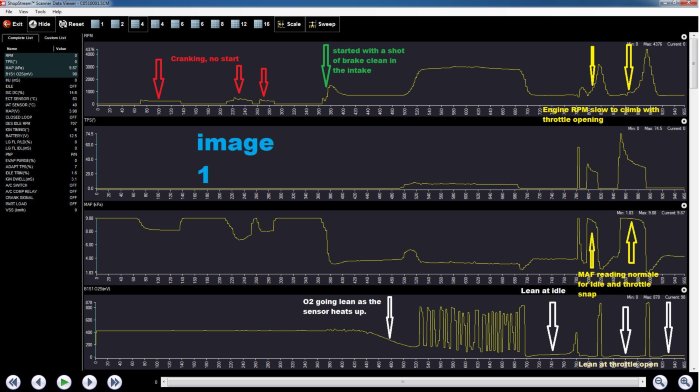
Image 1
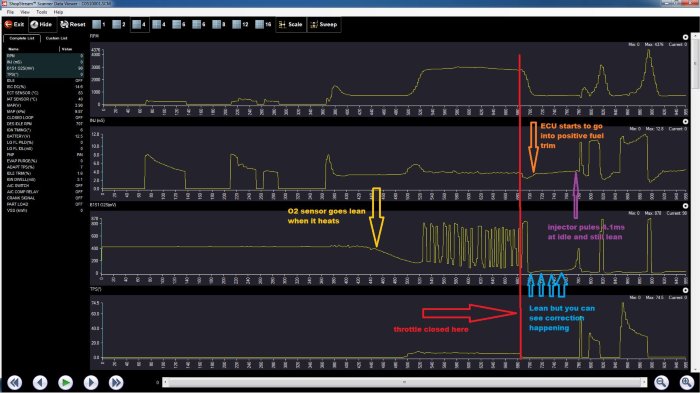
Image 2
That's well enough evidence to say there is a fuel supply issue.
Brad's next step was to look at fuel pressure, this engine is a dead head system with reg in the tank and no test port on the rail.
Brad's test here was to use a scope with a current clamp to look at the current draw of the fuel pump. See image 3.
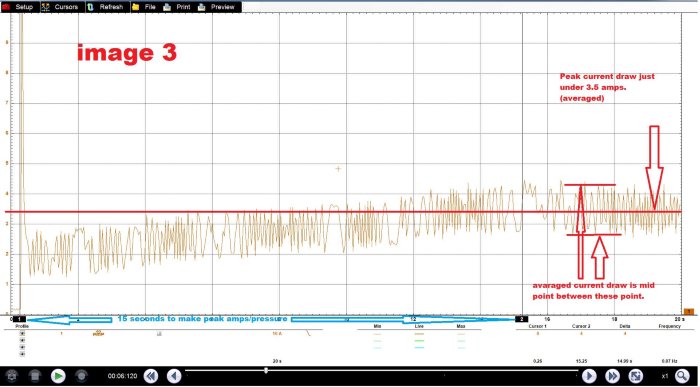
Image 3
Key points observed in this screenshot are:
- Current equals pressure
- Peak current is low, = fuel pressure is low
- Excessive time to get to the peak current/pressure.
"This is enough to warrant actually getting my hands dirty on this job and removing the pump."
The video above shows it well; 1.8L/min free flow and drawing air at a relatively low fuel level.
The pump assembly was replaced and the new pump was scoped to verify the fix.
Key points on final scope below are:
-Peak current draw now 5 amps,
-Higher current draw = higher fuel ressure
-Only 1.6 second from zero psi to peak fuel pressure.
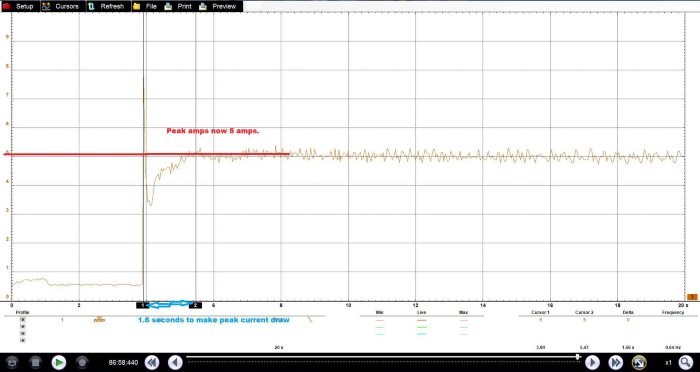
Image 4
For submitting this great case study, Brad has won a DAT TE012 - Multimeter Test Lead & Adaptor Kit, Thanks to our friends at Injectronics.
Congrats Brad!
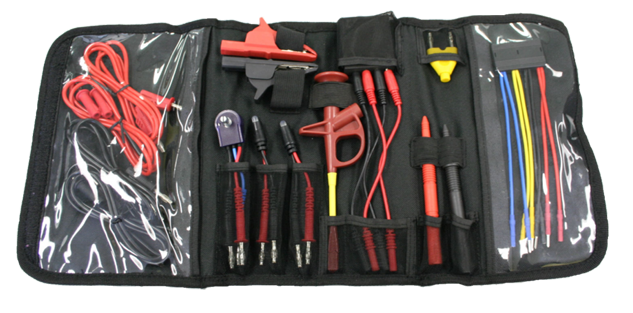
What makes a good case study?